At the most recent Federation of Fly Fishermen conclave held in West Yellowstone, among other activities there was a lot of fly casting taking place. Never one to ignore such a thing, I took in the proceedings with great interest. The wide variety of casting skills I saw on display reminded me—as always—that one of the most difficult things to do in all of fly fishing is to cast twenty feet.
Twenty feet? Am I kidding? No, I’m not. And I’m not being snide, either. I’m simply talking about casting a fly accurately to a target twenty feet away from where you stand via a tightly driven loop of line and leader.
Try it yourself. If you find that you can cast twenty feet (this includes your leader) repeatedly, accurately, with a tight loop, in the presence of wind, congratulations. You know a thing or two about fly casting. Indeed, you are casting better than 98% of all fishermen.
Why is the short cast so difficult? There are several reasons, but the primary one is the use of a casting stroke that is too long for the length of line being cast. For maximum efficiency and effectiveness, a given length of line requires a given length casting stroke. When the length of the line changes, so too must the length of the stroke. There is a simple tenet regarding this concept that every angler should know: Shorter line, shorter stroke. Longer line, longer stroke.
Here’s how it works: If you find your line and leader turning over in a wide loop and piling up in a heap (when this isn’t intentional), your stroke is too long. Shorten it by not taking the rod so far back on your backcast. Shorten your stroke until you find yourself forming nice, tight loops that drive the fly to the target. Conversely, if you find that your line and leader crash onto the water before they have completely unrolled, lengthen your stroke. Virtually every student I’ve ever instructed has needed to shorten their stroke to make a twenty foot cast; so look to that first.
The goal here is to find the right stroke length—which will be slightly different for all of us, owing to our physical differences—that delivers the fly to the target with a tight loop, turning over a foot or so above the water. In this way we can achieve great accuracy and render irrelevant most wind.
In really big wind, you may also have to speed up your stroke to straighten your leader and fly. But increasing the speed of your stroke must be done in conjunction with the proper length of stroke. Effort alone will never straighten your leader and fly—your stroke must be the right length first.
Casting twenty feet (or shorter) should be one of the simplest tasks in fly fishing, but for most anglers it remains one of the most difficult. To make it simple, just remember to employ the right length casting stroke. For almost all of us, that means shortening our stroke.















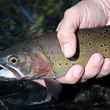




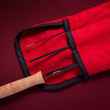




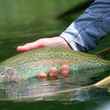


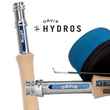
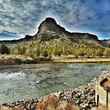
Comments
Stephen Zakur replied on Permalink
I'm going to try and cast 20 feet later today, I think I can do it, though you've planted some seeds of doubt. The longer casting stroke when bombing out line with a double haul is something that's second nature but I've not consciously thought about the short game. Good article.
jon replied on Permalink
Good read and I agree 100%. The one other thing I might add is most people are going for fast action rods. A slower or medium action rod may be a lot easier on short casts. It seems like most modern rods are all very fast. I prefer my older medium action rods to many of the newer ones, especially on a day where I am making short casts, or maybe I am just overly nostalgic.
Jason Dean replied on Permalink
I agree about the fast action rods, they make everyone a good caster at longer distances but not so much up close. I started on a fast action and now I'm loving my medium action and probably going to build a slow action this winter.
Anonymous replied on Permalink
A lot of my friends who fish our small trout streams rarely have to cast 20 ft and when we get out on some big water we look kind of foolish to a lot of fly fishermen, But if I took those fishermen to my trout stream they would have a hard time getting their line 10 feet without tangling up with a stump or tree limb and would look about as foolish as us. Everyone needs to know how to cast 20ft if your fishing that type of water and I practice trying to get to 25.just don't make fun of those who cant
Michael Wong replied on Permalink
I used to fish fast action rods (Winston LTX, Sage TCX, Orvis T9) for long casts in the North Platte, but now that i moved near Deckers (the South Platte), where casts tend to be 10' - 30', I've switched my system to a super soft action Sage Circa 8'6" 3 wt and overloading it with a 6 wt Sharkskin flyline. The feel of the 4- 10 feet of 6wt line loading a slow action 3 wt rod is not much different than 30 feet of 6 wt line loading a 6 wt stiff rod. The casting is so easy that I am not cursing the setup any more. Even when using a 14' leader, tapering to 7X, I need no more than 6 feet of fly line to load the rod and present a size 22 dry fly with ease and finesse. Since there is a lot of streamside vegetation where you can get snagged with too much back casting, I tend to have 4 feet of line for the back cast, and shoot line for the longer casts. Sharkskin makes it easy. When I fish nymphs close in (like 10 -15 feet), then I use a thingamabob to load the rod, and then there is no need to have the fly line outside the rod tip.
Ralph King replied on Permalink
I can cast 20' very well with my Tenkara rods.
Tony Ascaso replied on Permalink
It all depends, if I am casting to picky trout with an 18 foot 6x leader and tippet, I am going to need a bit more fly line out in order to get that thing to roll out and land. Frankly, in that type of small stream situation I just bring my Tenkara rods and slay them with that system.
Alvaro P Rojas replied on Permalink
Excellent point to call. This show every one that there is not a set way to cast your fly, there is to many different factors that will affect it, Just get educated about casting techniques and apply the closest to your current need and conditions.
Steven Matthews replied on Permalink
Just rollcast, Christ. I use a fly rod for stealth. To hunt, find available lairs, observe stream ecology,and present a fly the best way to ensnare a catch. The dandies can watch their videos while I watch my fish fry.
Mike Lundrigan replied on Permalink
I agree….roll cast!
Pete replied on Permalink
Good “Reminder” article, I find that 20 foot cast are often required with small flies, size 16 and smaller, with longer leaders 14 feet or more, small tippets, 5X & 6X, so it’s good to practice with that gear, specially for small streams
Howard Hayden replied on Permalink
In old age, I have been graced with many opportunities to cast into different waters with rods of diverse length and rigidity. The comment of overweighting the line choice is correct. Rods that take a 3 wt. line depend upon a 30 ft. length of line to flex the rod correctly. A slightly overweighted line and rod combo allows better control of line, leader, and delicate fly placement. Let the ensemble float out over the water and thence have current carry the fly into the specific area that may have fish. There are lines, double tapers, of 45 ft. length, designed to small capacity reels, that fit well into this special, small water fishing. I do not understand the need to a very long leader which has no weight to load the rod, if the creek is only 6 or 7 ft. wide! Light tippets are needed but an entire leader length is not. Think delicate; I often cast in a kneeling mode to keep my profile low and to simulate casts over larger waters. The reel is a device to hold and store the line...that is all. In Scouting, I have kids use short rods to practice accuracy in gym floors, casting at colorful frisbees as targets. Think delicate, think small, realize the most of your fish will be small, too. Go barbless!
Pages